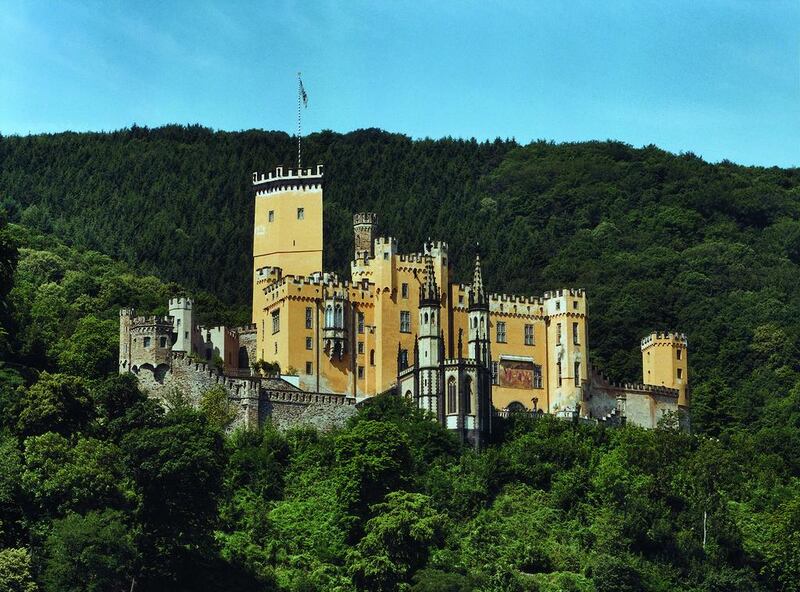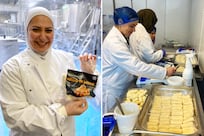Why Koblenz?
Let’s not overstate things. Koblenz isn’t going to knock your Birkenstocks off. It’s not that kind of a place. But it is a quaint spot that could easily provide a happy interlude from big-city life for two or three days of a German holiday.
Koblenz sits at the confluence of the Rhine and Moselle rivers. In 9BC, the Roman general Drusus, during his conquests in Germania, built a castle on the site and named it “Castellum apud Confluentes” (Castle at the Confluence: how clever). It’s from this “confluentes” that the name Koblenz flowed.
This strategic location, though handy for trade, has been both a blessing and a curse for Koblenz. Over the centuries, Koblenz has belonged to, or at the very least been sacked by, Romans, Franks, Vikings, Normans, Swedes, Prussians, the French and Germans.
In November 1944, Allied planes carpet-bombed Koblenz and flattened most of the old city. Decades later, the reconstruction has been handled with sufficient care that a visitor could easily mistake rebuilt buildings for old ones.
A comfortable bed
You know that feeling when you've booked into a hotel, and it's OK, but then you come across a nicer one for about the same price? That was how I felt when I stumbled upon the Hotel Morjan (www.hotel-morjan.de; 0049 261 304290). What a lovely view beckoned from its blue-and-white balconies overlooking the Rhine. What a pleasant restaurant, with its patio catching the breeze, and an avuncular, Kriss Kringle-like waiter bringing a restorative beverage to your table. I lunched there twice and was swayed by the warmth of the service, the quality of the food and the coziness of the setting. If I were to visit Koblenz again, the Morjan would be my hotel. Doubles from €90 (Dh450), including breakfast but not including taxes.
Alas, my booking was at the Ibis Koblenz (www.ibis.com; 0049 261 30240). It offers reasonably priced deals online (doubles from US$124 [Dh456], including taxes). It's clean and safe – there's nothing to complain about, but it's nothing special.
Find your feet
Koblenz is at its best as a place to walk. Start by strolling to the point where the Rhine and Mosel meet. Throughout the Old City, you can wander happily from plaza to plaza, admiring the churches and munching on an apple strudel. To burn off some of that strudel, take the easy, winding walk up to Fort Konstantin. It’s under renovation and feels quite abandoned, but offers a panoramic view of Koblenz and the Rhine Valley.
Meet the locals
The plazas in Koblenz’s old city are its best places for people-watching. My favourite is Josef-Görres-Platz, with its cafes and tulip gardens.
At the plaza’s centre is the oddest piece of public art. It’s a fountain with a column at its centre that depicts the 2,000-year-old history of Koblenz, but not in an “Our Glorious Past” kind of way. Instead, it shows alternating eras of growth and of destruction, from Romans at the base to modernity at the peak. The smoke billowing from the fires of ruined epochs flattens as it rises and forms the base for the next cycle, in which things get better, for a while. It’s quite startling to see this acceptance of decline in a plaza where carefree kids run around with their lollies and tourists amble happily by.
Book a table
It’s all about the white asparagus. Germans love their spargel, and the best time to try it is during the springtime harvest season (which, naturally, is called spargelzeit). German spargel has much more body and a milder, fresher taste, than the stiff green shoots that you might find in supermarkets in the UAE.
At Königsbacher Treff, near the train station, the waiter tells me that the asparagus on my plate had been picked that same day not five kilometres away. But the best spargel that I had in Koblenz was at the aforementioned Hotel Morjan. A cold beverage, a coffee and spargel with meat costs €26 (Dh130), including tax.
Shopper’s paradise
The clothes stores in the old town are enticing. I bought a pair of Italian-made desert boots for €120 (Dh601) at a shop called Leonardo (Firmungstraße; www.leonardo-schuhe-koblenz.de). There's also a good mix of knick-knack shops and art shops.
What to avoid
A few things. The south end of town is unlovely. Servers sometimes presume that you don’t want change but are leaving them a fat tip; you have to pester them. From December through February, this neck of the woods gets nippy. And Koblenz’s charms might wear thin after any more than three days, by which point you’ll be ready for some big-city time.
Don’t miss
The train trip from Frankfurt is almost unreal in its prettiness, at least once you get past Mainz, an industrial suburb. The greenness of the countryside is always startling to a Gulf visitor. The ride is an unfolding postcard of river barges, gingerbread villages and Disney castles. For the best views, try to get a right-hand window seat on the ride north, and a left-hand window seat on the ride south.
For more river time, several companies in Koblenz offer short cruises on the Rhine. The standard fare for a one-hour jaunt is about €7.50 (Dh38).
Getting there
Etihad (www.etihad.com; 02 599 0000), Emirates (www.emirates.com; 600 555 555) and Lufthansa (www.lufthansa.com; 04 373 9100) all fly direct from the UAE to Frankfurt, with returns costing about Dh3,300, including taxes. Trains from Frankfurt to Koblenz take 70 minutes, with fares from €47 (Dh235). See www.bahn.de for timetables and more information.
[ rmckenzie@thenational.ae ]
Follow us @TravelNational
Follow us on Facebook for discussions, entertainment, reviews, wellness and news.





